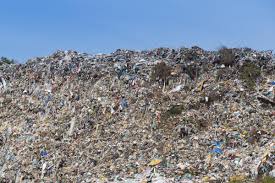WHAT IS SOIL POLLUTION-SOURCES, EFFECT & CONTROL
INTRODUCTION
Soil is basis of life where we reside and get our food supply. Though soil is not a renewable resource and its degradation can be rather rapid while, it takes thousands of years to form and regenerate. Soil pollution as part of land degradation is caused by the human-made chemicals or other alteration in the natural soil environment. It is mainly caused by industrial activity, agricultural chemicals or improper disposal of waste. The most common chemicals involved are petroleum hydrocarbons, solvents, pesticides, lead, and other heavy metals.. Pollutants in soil remain longer as compared to water and air.
Sources of soil pollution
- Agrochemicals & farming practices- to increase the agricultural production, huge quantity of fertilizers and pesticides are used. The poor quality of irrigation water with pesticides and heavy metals from applied nutrients badly damage the soil quality. The use of inorganic nutrients for a long time gradually declines the soil fertility. The fertilizer and chemicals in the soil undergo various transformation and its runoff and erosion result in eutrophication of water bodies. The intensive tillage practices, deforestation, overgrazing, poor management of irrigation, industrialization and inappropriate cultivation practices affect major part of the total geographical areas. The agriculture wastes from plant and animals are responsible for soil pollution and thus changing the natural composition and structure of soil.
- Disposal of solid wastes on land- these are mostly generated from industrial, domestic and urban and agricultural sources. Industrial wastes include toxic pollutants, heavy metals and organic compounds, inorganic complexes and non-biodegradable materials. Metropolitan and urban cities dump million tons of solid waste at different places poses a serious threat especially in developed countries.
- Mining- it results in loss of fertile land, formation of huge mountains of wastes, and addition of harmful substances to the soil. The top layer of soil is badly affected.
- Radioactive pollutants- such pollutants emits from nuclear device explosion, nuclear testing laboratories, nuclear power plants and weapons.
- Biological agents- major sources are human excreta, animal and bird excreta, municipal wastes, biomedical wastes and faulty sanitation. The industrial parasites are most threatening biological agents.
- Heavy metal pollutants- from industrial discharge and from sewage sludge.
Natural sources of soil pollution are volcanoes, tsunami waves and storm in desert.

Effect of soil pollution
- Contaminated or polluted soil directly affects human health through direct contact with soil or via inhalation of soil contaminants which have vaporized; potentially greater threats are posed by the infiltration of soil contamination into groundwater aquifers used for human consumption. Such consumption leads to pollution-related diseases.
- Chronic exposure to chromium, lead and other metals, petroleum, solvents, and many pesticide and herbicide formulations can be carcinogenic, can cause congenital disorders, or can cause other chronic health conditions.
- Excessive use of agro-chemicals does not allow flourishing microbial flora and fauna in the soil. Rain also adds radioactive contaminants into water bodies which affect aquatic flora and fauna.
- Excessive use of pesticides, herbicides and fertilizers adversely affect the soil quality and their residues remain longer in soil. Some pesticides contaminate drinking water through soil into ground water. People in contact with pesticides are extremely prone to get poisoned.
- The industrial and agrochemical wastes are extremely toxic to organisms and may transfer to all organisms through food chain. Radioactive pollutants can cause a number of undesirable diseases of digestive system if they enter our body through food chain.
- Heavy metals and toxic substances from mining can destroy microorganism of the soil. Infant and children get more effective since rate of retention and absorption of heavy metals is higher in their body.
Control of Soil Pollution
- Recycling and Reuse of wastes- To minimize soil pollution, the wastes such as paper, plastics, metals, glasses, organics, petroleum products and industrial effluents etc. should be recycled and reused.
- Proper dumping of urban and industrial wastes- open dumping is very prevalent, so adoption of suitable and proper industrial and urban waste management is very crucial. Besides, biochemical wastes should be carefully disposed off to reduce health hazard.
- Adoption of sustainable agriculture, organic farming, use of bio fertilizers, bio integrated pest management.
- Production of natural fertilizers – Bio-pesticides should be used in place of toxic chemical pesticides. Organic fertilizers should be used in place of synthesized chemical fertilizers. Use of compost.
- Proper sanitation- People should be trained regarding sanitary habits.
- Control of soil erosion– through adopting agronomical and mechanical soil conservation measures.
- Public awareness-Public awareness programs through Mass media, Educational institutions and voluntary agencies should be imparted to educate people on health hazards by environmental education.
- Afforestation, social & agroforestry– Afforestation is the process of planting trees, or sowing seeds, in a barren land devoid of any trees to develop a forest.